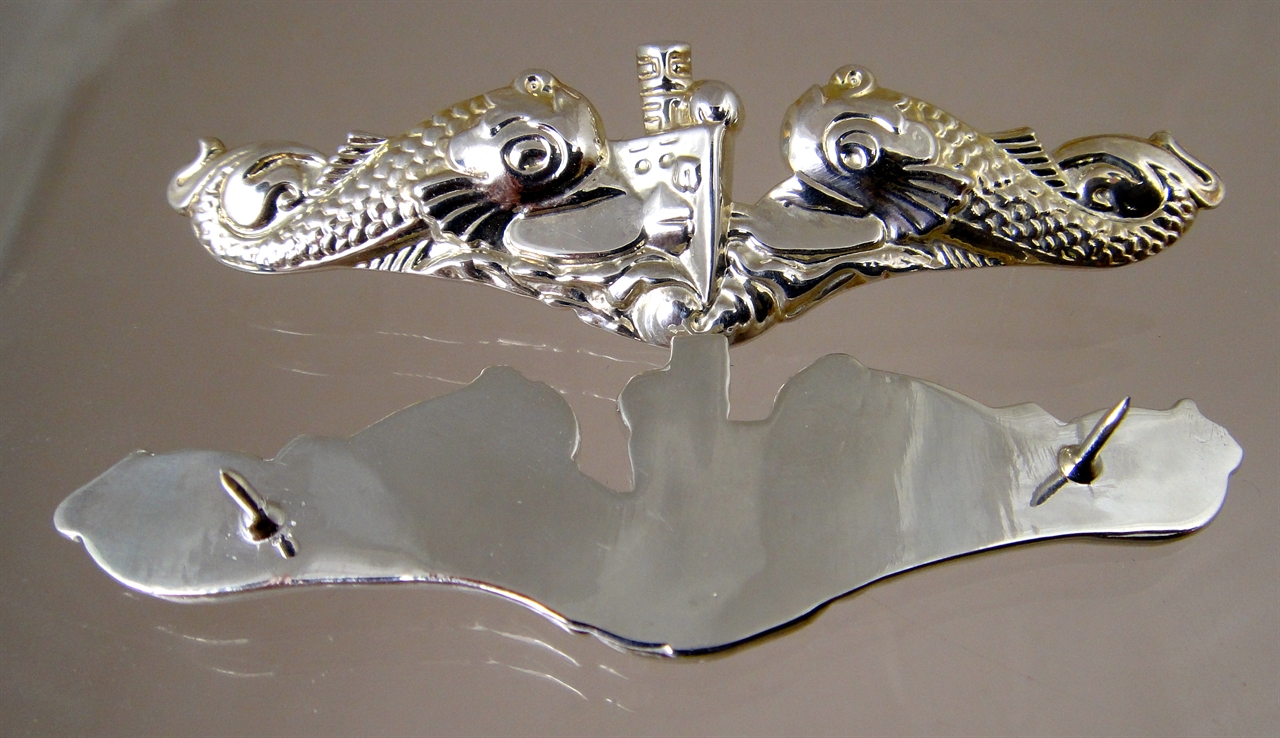Navy Warfare Pins: Guide To Qualification & Significance
What truly distinguishes a sailor in the vast, churning ocean of the U.S. Navy? It's not just their uniform, but the glint of hard-earned metal the warfare pins that signify mastery of specialized skills and unwavering dedication. These emblems, miniature testaments to countless hours of training and practical experience, represent far more than decorative flair. They whisper tales of resilience, leadership, and the pursuit of excellence in the face of daunting challenges. From the crashing waves of surface warfare to the silent depths of submarine operations, these pins embody the spirit of the United States Navy.
The world of naval warfare is a complex tapestry woven with threads of tradition, technology, and unwavering commitment. Within this intricate framework, warfare qualification pins serve as both a recognition of achievement and a symbol of the specialized skills necessary to navigate the multifaceted demands of maritime operations. These pins, more than just ornamental embellishments, represent a sailor's dedication to mastering a specific domain of naval warfare, whether it be surface warfare, aviation, submarine operations, or information dominance. They are a testament to the rigorous training, practical experience, and unwavering commitment required to excel in these demanding fields.
| Category | Details |
|---|---|
| Full Name | Ernest Joseph King |
| Born | November 23, 1878, Lorain, Ohio, U.S. |
| Died | June 25, 1956, Portsmouth, New Hampshire, U.S. |
| Career | United States Navy Admiral |
| Known for | Chief of Naval Operations and Commander-in-Chief, U.S. Fleet during World War II; instrumental in the creation of the submarine warfare insignia ("Dolphins"). |
| Key Contribution | Proposed the creation of the submarine warfare insignia in the summer of 1923 while serving as Commander, Submarine Division Three. |
| Reference | Naval History and Heritage Command |
Earning a warfare pin is no easy feat. It's a demanding process that pushes sailors to their limits, requiring them to not only acquire technical proficiency but also demonstrate leadership, teamwork, and a deep understanding of naval doctrine. The Enlisted Surface Warfare Specialist (ESWS) pin, for instance, demands extensive knowledge of a surface vessel's intricate systems, from engineering and navigation to damage control and combat operations. Similarly, the coveted Dolphins of the submarine force signify mastery of a unique and challenging underwater environment, requiring a thorough understanding of stealth, survival, and complex weapons systems.
The path to qualification often involves rigorous written examinations, practical demonstrations, and oral boards, all designed to assess a sailor's comprehensive knowledge and ability to apply it in real-world scenarios. This journey extends beyond technical expertise; it also emphasizes leadership and teamwork, forging bonds of camaraderie and shared purpose among shipmates. The qualification process is a crucible that tests not only knowledge but also character, shaping sailors into well-rounded professionals capable of handling the immense responsibilities entrusted to them.
But the significance of warfare pins extends beyond individual achievement. They contribute to the overall readiness and effectiveness of the fleet. By fostering a culture of specialization and expertise, these programs ensure that the Navy maintains a highly skilled and adaptable force capable of responding to a wide range of challenges. The pursuit of these qualifications raises the bar for all sailors, driving them to constantly improve and refine their skills. This collective pursuit of excellence creates a powerful synergy, enhancing the overall operational capability of the Navy.
Moreover, warfare pins serve as a powerful motivational tool. They inspire sailors to strive for higher levels of proficiency and contribute to a sense of professional pride. The visible recognition of a sailors specialized skills not only boosts morale but also encourages a culture of continuous learning and development. This culture, deeply ingrained within the fabric of the Navy, fuels the drive for innovation and ensures that the fleet remains at the forefront of maritime power.
Consider the ESWS pin. The subtle differences between the officer and enlisted versions, more than just the traditional gold and silver distinction, speak volumes about the distinct roles and responsibilities within the Navy's hierarchy. The officers pin, featuring swords behind the hull, symbolizes leadership and command, while the enlisted pin, with its cutlasses, represents the hands-on execution of orders and the vital role of the enlisted sailor in the day-to-day operations of the ship. These seemingly minor details underscore the intricate balance of leadership and execution that forms the backbone of naval operations.
Warfare pins, while tangible symbols of achievement, represent a much deeper commitment to excellence. They reflect the dedication, perseverance, and unwavering spirit of the men and women who serve in the United States Navy, safeguarding the nations interests across the globe. These emblems are not merely accessories but rather badges of honor, testaments to the enduring pursuit of excellence that defines the spirit of the United States Navy. From the junior enlisted sailor earning their first pin to the seasoned veteran proudly displaying a collection of hard-won qualifications, these insignia speak to a shared commitment to duty, honor, and the pursuit of excellence in the face of any challenge.
The history of these pins, like the Navy itself, is steeped in tradition. The submarine warfare insignia, or "Dolphins," proposed by Captain Ernest J. King in 1923, stands as one of the oldest and most respected warfare devices. Its evolution mirrors the advancements in submarine technology and tactics, from the early days of submersible warfare to the sophisticated nuclear-powered vessels of today. Each pin, a testament to the Navys evolving capabilities, carries the weight of history and the legacy of those who served before.
In the dynamic and ever-evolving landscape of naval warfare, the pursuit of excellence is a constant endeavor. Warfare pins, while a visible symbol of achievement, represent a much deeper commitment to professional development, teamwork, and the unwavering pursuit of mission readiness. They are a testament to the dedication and skill of the men and women who wear them, and a symbol of the enduring strength of the United States Navy.


